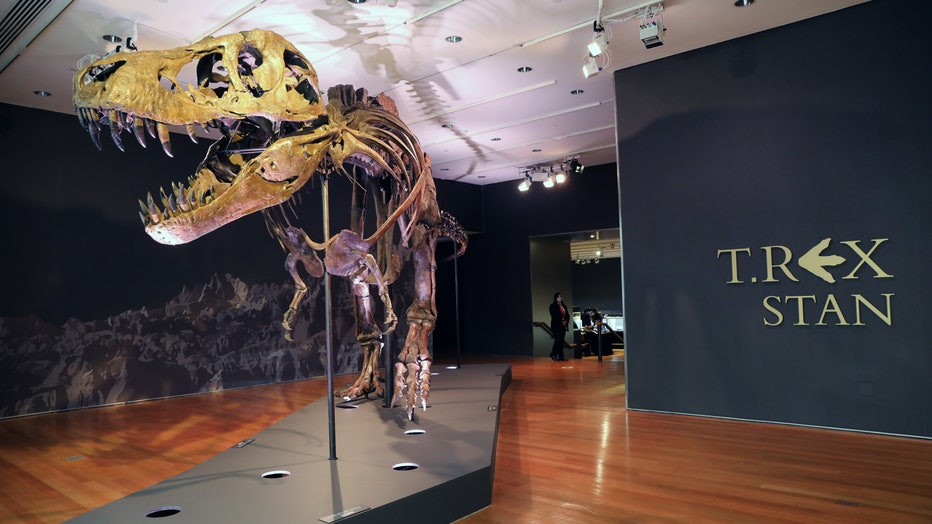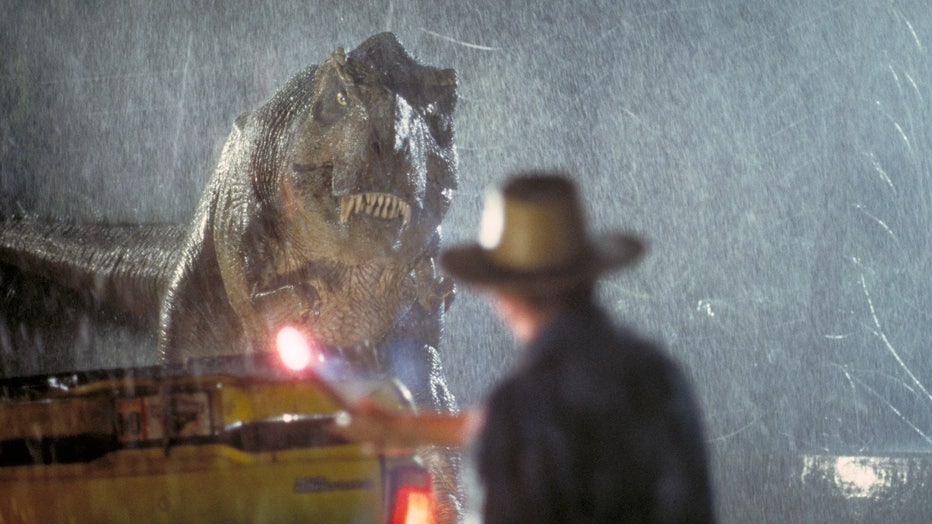T. rex may not have had ferocious, sharp teeth after all, new study says

Timelapse shows construction of world's largest dinosaur fossil
Patagotitan mayorum has arrived at London?s Natural History Museum.
The Tyrannosaurus rex is often shown baring massive, sharp teeth, like the ferocious creature in "Jurassic Park." But new research suggests that this classic image might be wrong.
The teeth on T. rex and other big theropods were likely covered by scaly lips, concludes a study published Thursday in the journal Science. The dinosaur's teeth didn't stick out when its mouth was closed, and even in a wide open bite, you might just see the tips, the scientists found.
The research is the latest in a long back-and-forth over how dinosaur mouths really looked.
READ MORE: ‘Most gigantic’ dinosaur ever discovered goes on display in London
Recent depictions show big teeth jutting out of the dinosaurs’ jaws, even when closed. Some thought the predators’ teeth were just too big to fit in their mouths, said study author Thomas Cullen, a paleontologist at Auburn University in Alabama.

A Tyrannosaurus Rex dinosaur fossil skeleton is displayed in a gallery at Christie’s auction house on September 17, 2020 in New York City. (Photo by Spencer Platt/Getty Images)
When researchers compared skulls from dinosaurs and living reptiles, though, they found this wasn’t the case. Some large monitor lizards actually have bigger teeth than T. rex compared to their skull size, and can still fit them under a set of scaly lips, Cullen said.
The scientists also found clues in the pattern of wear and tear on tooth surfaces.
READ MORE: Oldest sea reptile remains from 2 million years ago found on Arctic island
For a creature like a crocodile, whose teeth stick out of its mouth, the exposed part gets worn down quickly — "like someone’s taken a sander to the side of the tooth," said another study author Mark Witton, a paleoartist at England’s University of Portsmouth.
But when researchers analyzed a tooth from a Daspletosaurus, a T. rex relative, they found it was in good condition and it didn’t show that uneven damage pattern.

Actor Sam Neill as Dr. Alan Grant takes on a Tyrannosaurus Rex in a scene from the film 'Jurassic Park', 1993. (Photo by Murray Close/Getty Images)
With this evidence and other clues from the dinosaurs’ anatomy, the study makes a good case for lipped tyrannosaurs, said University of Maryland paleontologist Thomas Holtz, who was not involved with the study. Still, "we’re not talking kissy lips," he pointed out — they'd be thin and scaly like those of the Komodo dragon, a large lizard.
It’s not the first time our depictions of dinosaurs have been called into question: Other research has shown that T. rex was more hunched over than we used to think, and that fierce velociraptors probably sported feathers. Most of what we know about dinosaurs comes from their bones, but it can be harder to get clear answers about soft tissues like skin, which usually aren't preserved as fossils.
Adding lips may make dinosaurs look a little less ferocious, but it also makes them feel more realistic, Witton said.
"You don’t really see a monster," he said. "You see an animal."

